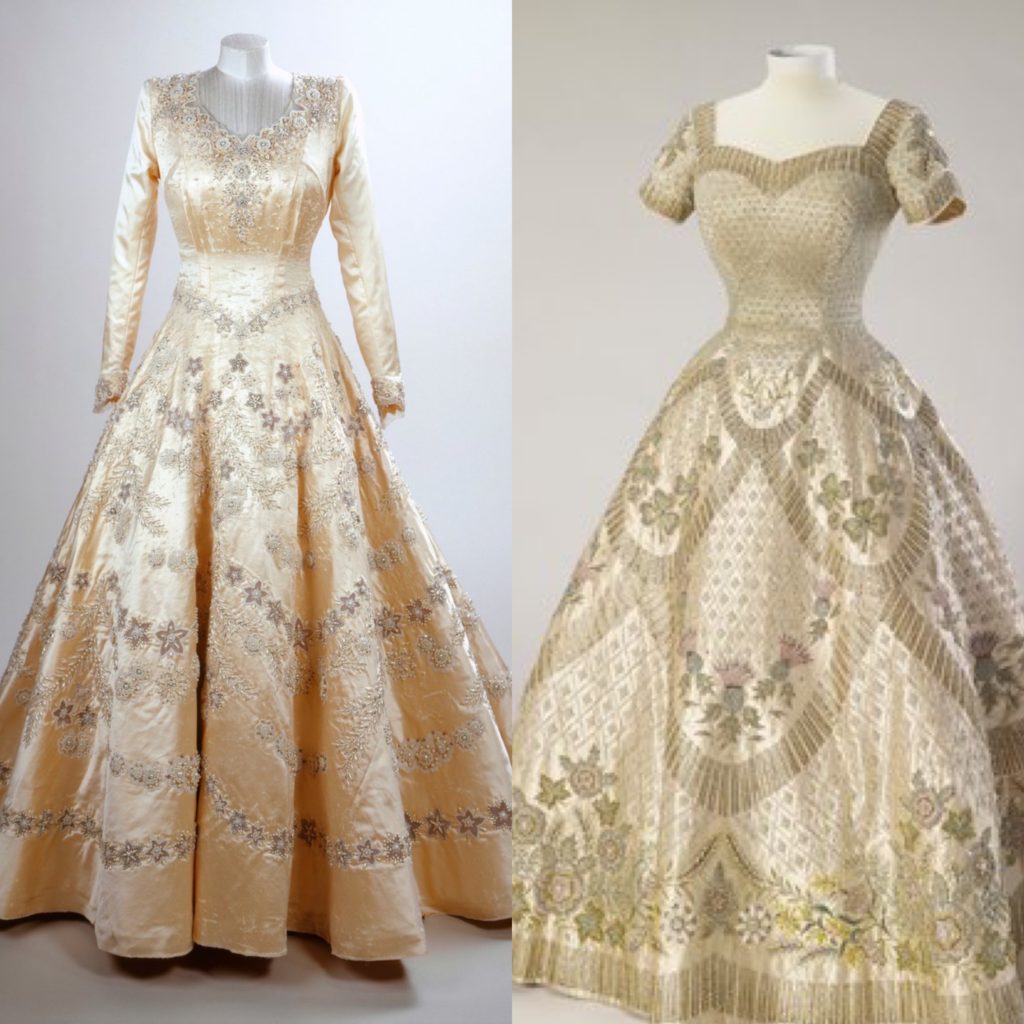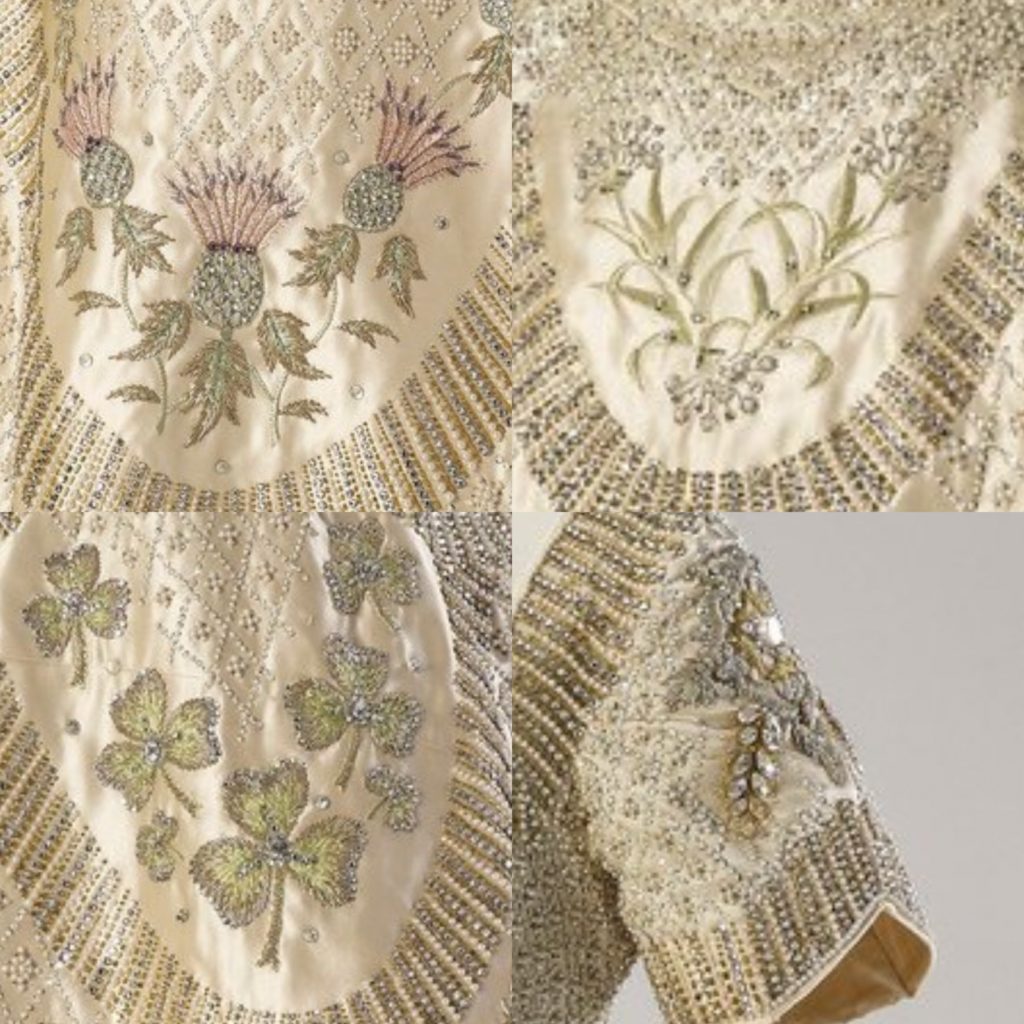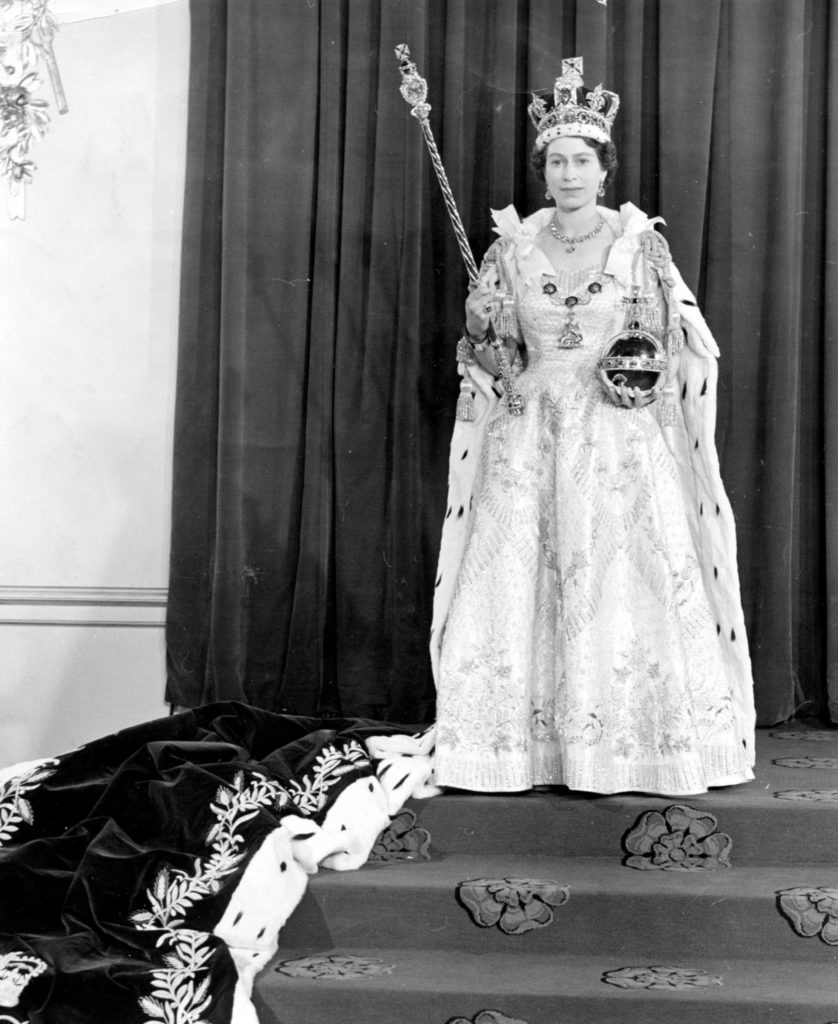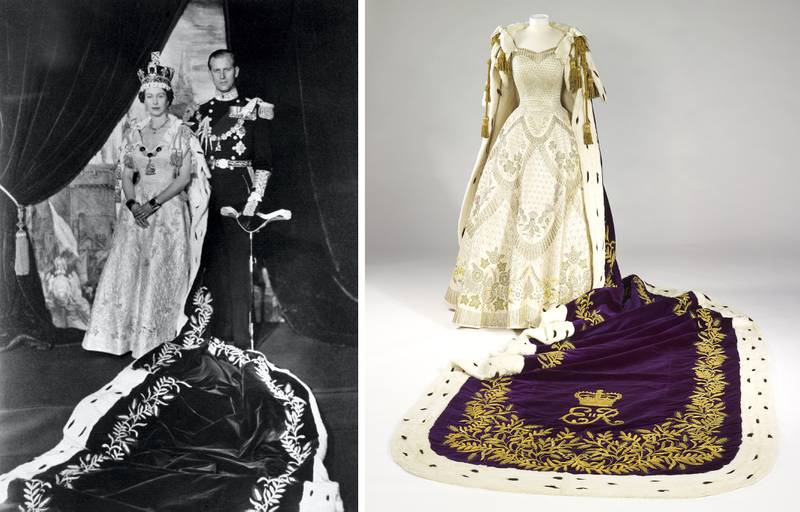Queen Elizabeth II’s Coronation gown by Sir Norman Hartnell
This breathtaking Norman Hartnell gown was worn by Queen Elizabeth II on her Coronation day, 69 years ago today, on June 2, 1953.

Hartnell was no stranger to designing for the royal family. He had served as a couturier for senior royal members since 1939 and was granted a Royal Warrant in 1940. Hartnell had also created Queen Elizabeth II’s wedding gown in 1947. Due to his skill and past success designing for her, Elizabeth specially requested that Hartnell design her Coronation gown. She specified that she would like it to feature similar design elements to her wedding gown, including that it be made from white satin. When comparing the two gowns side by side, the similarities are very obvious in the bodice, silhouette, and tiered-scalloped embroidery throughout the skirts.

Hartnell must have felt the immense pressure of being responsible for creating a gown that would undoubtedly become a piece of history. He recalled in his 1955 autobiography “Silver and Gold”, that he spent time researching previous Coronation outfits by visiting the London Museum and London Library before sitting down to create his sketches. This gave him the inspiration to include symbolic imagery in the gown’s embroidery. He said, “My mind was teeming with heraldic and floral ideas. I thought of lilies, roses, marguerites and golden corn; I thought of altar cloths and sacred vestments; I thought of the sky, the earth, the sun, the moon, the stars and everything heavenly that might be embroidered upon a dress destined to be historic. Altogether, I created nine differing designs which began in almost severe simplicity and proceeded towards elaboration. I liked the last one best, but naturally did not express my opinion when I submitted these paintings to Her Majesty.”
Hartnell’s instinct was correct, and his last sketch indeed turned out to be the Queen’s favorite of the bunch. This version featured a gown that incorporated the four emblems of Great Britain, embroidered in white and silver. Worried this might look too similar to her wedding gown, the Queen recommended the use of color in the embroidery as had been seen in some of the other sketches. There was also one more additional tweak that needed to be done: Hartnell recalled, “she was unwilling to wear a gown bearing emblems of Great Britain without the emblems of all the Dominions of which she was now Queen.” Moving forward with his final concept encapsulating all of these ideas, Hartnell stumbled across a glaring mistake that he had made during his research. He had assumed the daffodil was the emblem of Wales, but it was actually a leek. After a meeting with the Garter King of Arms to confirm this, he wondered how on Earth he would incorporate an ugly leek into his beautiful embroidery vision. After some time working with his team of embroiders, they were able to figure out a way to make leeks look fashionable and fit for a Queen. The final design for this emblem was comprised of white and pale green silk thread dotted with diamonds.


Once Her Majesty had approved the embroidery samples and final design, Hartnell’s team went to work to bring this gown to life. Royal Collection Trust describes that “The silk was produced at Lady Hart Dyke’s silk farm at Lullingstone Castle, Kent and was woven by Warner & Sons in Essex.” The intense detail work on the gown took embroiderers over 3000 hours to complete. The end result was exquisite and truly Coronation day worthy. Hartnell’s gown not only captured the youthfulness of the new Queen, who was just 27 at the time but also exalted a regal, dignified brilliance. Unbeknownst to the Queen, Hartnell had also added a little unapproved surprise to the dress. He placed a small embroidered four-leaf clover in the lining just where her left hand would rest during the Coronation ceremony for good luck.

On June 2, 1953, millions of people watched the Coronation of Queen Elizabeth II live on television, quickly making her gown one of the most recognizable in royal history. The Queen loved this gown so much that she wore it to six other occasions in the years after her Coronation. In honor of his royal contributions, Norman Hartnell became the first-ever couturier to be knighted, in 1977.

The first time the Coronation gown was ever displayed to the public was in 2013 at a Buckingham Palace exhibition, where it was paired with the dramatic Robe of Estate. This purple silk velvet robe is over 21 feet long and was embroidered by the Royal School of Needlework over the course of 3,500 hours.

The gown will be on display again at Windsor Castle during their Platinum Jubilee exhibit from July 7-Sept 26, 2022.

Sources:
Hartnell, Norman. Silver and Gold, The Autobiography of Norman Hartnell. V&A Publishing, London England. 1955.
